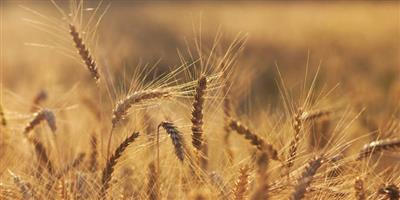SPOKANE, Wash. (July 7, 2016) – Waning returns for grain, feed and livestock are in contrast to stable or improved returns for row crops, tree fruit, forest products and nursery/greenhouse businesses.
Beef – Cattle markets are soft, pressured by increased supply and competition from poultry and pork. The cow herd grew in 2015 and is expected to continue growing at a slower pace in 2016. Total cattle on feed in June grew 2.2 percent from the prior year. Higher beef supplies haven’t translated to lower retail beef prices. Comparatively lower pork and poultry prices represent solid competition for consumers’ dollars and are expected to create headwinds for cow/calf producers through year end.
Dairy – Dairy markets are uncertain, but recently improved. After increasing more than $2 per cwt between May and June, Class III milk prices created profit opportunities for Northwest dairy producers. Higher prices are attributed to improving domestic demand and production challenges associated with high temperatures in the Midwest and Southwest. Globally, low milk prices are slowing milk production in the European Union, New Zealand and Australia.
Hay – A wide price spread between dairy-quality hay and lower-quality feeder hay increased grower focus on quality versus quantity. Weather permitting, production of higher quality hay should offset losses and bolster growers’ profit margins. Export shipments reveal a relatively strong start to the year, with increased shipments to the United Arab Emirates, Taiwan, Saudi Arabia and China.
Wheat – Northwest wheat crop conditions are average to well above average, supported by timely rains in most regions. However, the outlook for wheat prices remains bearish, overshadowed by forecasts for rising U.S. and global ending stocks. Questions around quality loom domestically and internationally. Although record U.S. hard red winter wheat yields are forecast, millers note challenges associated with low protein levels. Protein premiums are expected to widen.
Potatoes – The 2015-16 potato marketing season is closing with storage-related quality challenges. Lower late-season packouts reduced growers’ returns. However, reduced supplies and demand for fresh and processing potatoes set the stage for strong early-harvest potato prices. Despite lower 2016 contract prices, processor potatoes remain profitable while fresh, open (uncontracted) potato returns are more dynamic.
Sugar beets – Northwest sugar beet growers expect softer sugar prices despite lower global sugar supplies. Worldwide, 2016-17 sugar consumption is forecast at a record 174 million metric tons, exceeding production and drawing stocks down to their lowest level since 2010-11. The benefit to Northwest beet sugar markets, however, is limited by select food companies’ commitment to source non-GMO sugar.
Cherries – The outlook for the Northwest’s 2016 sweet cherry season is mixed. A warm spring resulted in one of the earliest harvests on record, but adverse weather during bloom and rain during harvest negatively impacted crop potential. Forecast cherry production dropped from 18.3 million to 17 million boxes. Although a smaller crop supports cherry prices, peak harvest volumes will likely pressure prices lower. Overall, industry profitability will vary, favoring growers with good crop volumes and high packouts.
Forest products – Although slow to rise, housing starts are forecast higher than 2015, driven by multi-family and new home construction, home improvement and tight supplies of existing homes for sale. Improved housing starts are expected to support lumber and panel prices through year end. Second quarter log supplies outpaced demand in the Columbia River region, with higher inventories attributed to consistent log inflows and lower export demand from Japan. Log inventories are tighter in the Puget Sound, Twin Harbors, Southern Oregon and Willamette Valley regions. Northwest timberland remains in high demand with steady price increases.
Nursery-greenhouse – The outlook for the nursery and greenhouse industry is positive, supported by steady demand, early bookings for 2017 and higher prices. An annual poll of Northwest FCS’ customers reveals year-over-year sales are up 9.7 percent. Most producers moved product quickly and could sell more inventory if available. Facing supply shortages, some buyers are seeking multi-year commitments. Timely access to labor remains a key industry concern.
Fisheries – Halibut harvested in Alaska accounts for the majority of global Pacific halibut production and is estimated to provide up to 80 percent of the supply. The 2016 Alaskan halibut Total Allowable Catch (excluding the Community Development Quota) is 52 percent less than the TAC in 2010. With declining supply, few substitutes and slight increases in demand, halibut prices are expected to remain strong until production increases.
Northwest FCS is a $10.3 billion financial cooperative providing financing and related services to farmers, ranchers, agribusinesses, commercial fishermen, timber producers, rural homeowners and crop insurance customers in Montana, Idaho, Oregon, Washington and Alaska. Northwest FCS is a member of the Farm Credit System, a nationwide network of borrower-owned lending institutions and the leading provider of credit to U.S. agriculture. For more information, go to northwestfcs.com





